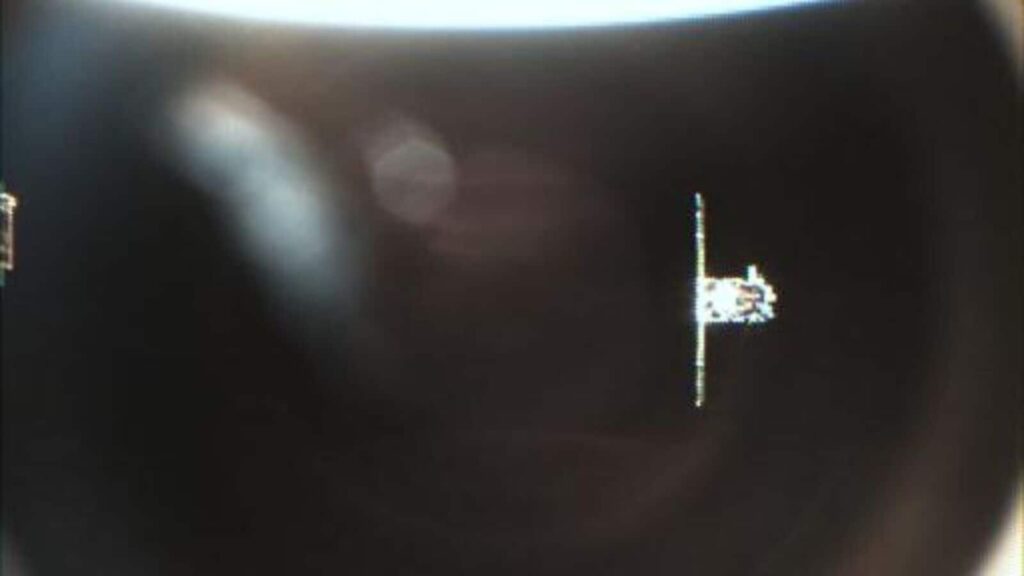ISRO SpadeX Mission: The two satellites launched by Indian Space Research Organisation (ISRO) were closing in for an “exciting handshake”, the space agency said early Sunday, January 12. The two satellites, SDX01 (Chaser) and SDX02 (Target), made a trial attempt to reach up to 3 metre but were moved back to a safe distance.
“The docking process will be done after analysing data further,” ISRO said without sharing any further detail. The ISRO performed the maneuver after delaying the docking process twice. The docking was first schedule to take place on January 7.
Earlier in a post on X, ISRO said, “At 15 metres, we see each other clearer and clearer, we are just 50 feet away for an exciting handshake,”
In another post on X, the ISRO released “stunning” images of the two satellites in space. “SpaDeX satellites holding position at 15m, capturing stunning photos and videos of each other!” ISRO said.
The ISRO later informed that a trial attempt to reach up to 15 metre and further to 3 metre was done. “Moving back spacecrafts to safe distance. The docking process will be done after analysing data further,” it added.
The SpaDex mission, launched on December 30 by the ISRO , aims to demonstrate in-space docking using small spacecraft.
The PSLV C60 rocket carrying the two 220-kilogramme satellites – Chaser and Target – lifted off from the Satish Dhawan Space Centre in Sriharikota, with the spacecraft placed into a 475-kilometre circular orbit.
How will the docking process happen in space?
The two small spacecraft were launched by PSLV-C60, independently and simultaneously, into a 470 km circular orbit at 55° inclination.
The ISRO said a small relative velocity was given between the Target and Chaser spacecraft at the time of separation from the launch vehicle.
This incremental velocity will allow the Target spacecraft to build a 10-20 km inter-satellite separation with respect to the Chaser within a day.
At the end of this “drift arrest manoeuvre”, the Target and Chaser will be in the same orbit with identical velocity but separated by about 20 km, known as “Far Rendezvous”.
The Chaser will then approach the Target with progressively reduced inter-satellite distances of 5 km, 1.5 km, 500 m, 225 m, 15 m, and 3 m, ultimately leading to the docking of the two spacecraft.
After successful docking and rigidization, electrical power transfer between the two satellites will be demonstrated before undocking and separation of the two satellites to start the operation of their respective payloads.
The expected mission life is up to two years.
Why is docking mission crucial for India?
With the SpaDex mission, ISRO aims put India in the elite club of nations with space-docking capabilities. If successful, India will march towards becoming the fourth country – after the US, Russia and China – in the world to have space-docking technology.
The ISRO explained that this technology is essential for India’s space ambitions, such as “Indian on Moon, sample return from the Moon [Chandrayaan 4 mission], and the building and operation of Bharatiya Antariksh Station (BAS).”
“Docking” happens when a spacecraft can manoeuvre and attach to a space station by itself. Spacecraft docking is significant for activities such as ferrying supplies to manned space stations, refueling space vehicles, and recovering daughter spacecraft separated from mother spacecraft.
Catch all the Business News, Market News, Breaking News Events and Latest News Updates on Live Mint. Download The Mint News App to get Daily Market Updates.
MoreLess

